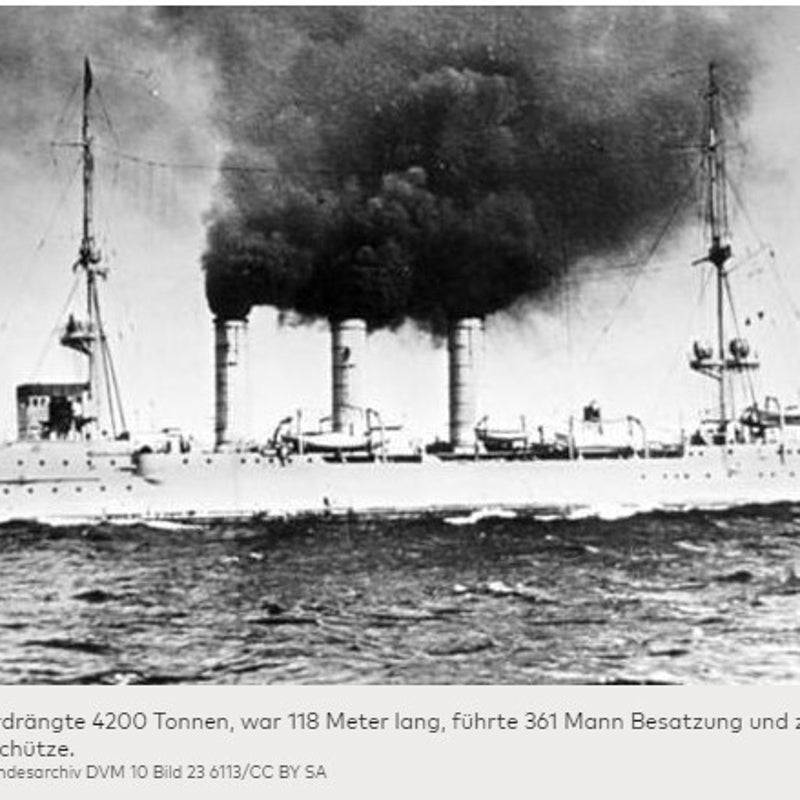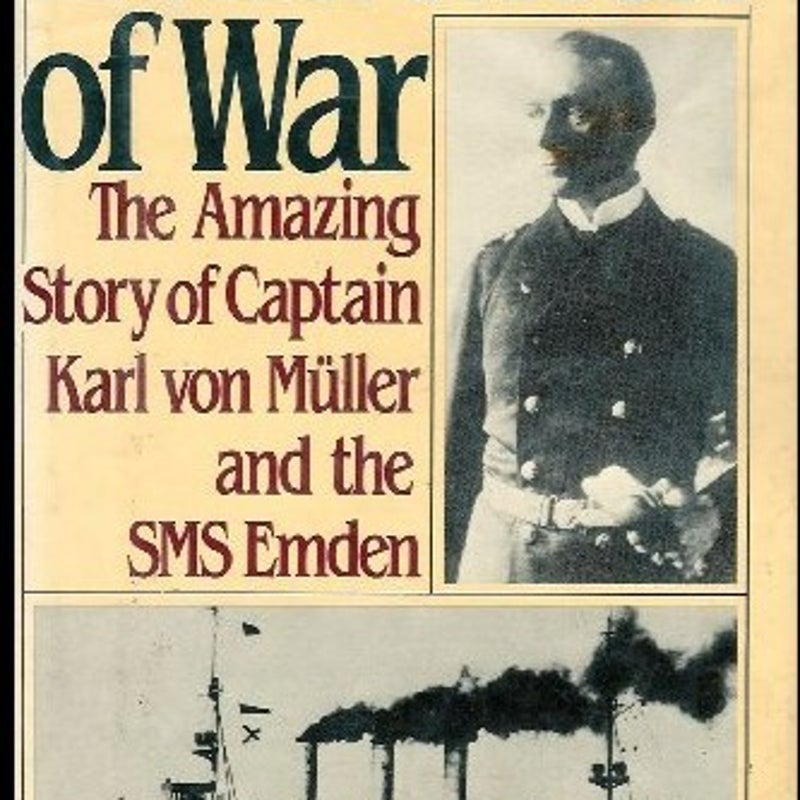The battle cruisers history
SMS Emden ("His Majesty's Ship Emden") was built for the Imperial German Navy (Kaiserliche Marine). Named for the town of Emden, she was laid down at the Kaiserliche Werft (Imperial Dockyard) in Danzig in 1906. The hull was launched in May 1908, and completed in July 1909. Emden was armed with ten 10.5 cm (4.1 in) guns and two torpedo tubes. (photo #2 is a crew photo taken before the war) Emden spent the majority of her career overseas in the German East Asia Squadron, based in Tsingtao, which belonged to the German Empire (In all of China Tsingtao Beer is still popular! During my many visits to China I never drank anything else :)).
In 1913, Karl von Müller took command of the ship (see photo #3).
At the very day the First World War started the crew of the Emden (photo #4 is a postcard showing crew members enjoying a swim at Tsingtao beach. The chap who sent the postcard has marked himself with an x above his head) organised a football match against a team from the visiting British War Ship HMS Hampshire at Tsingtao. The game ended in a 1:1 draw and shortly afterwards during the ongoing drinking match of the two crews, the captains of the two ships were informed about the breakout of the war. The captains decided to part ways in a gentlemanly way without hostilities. The HMS Hampshire will appear again later in the truly amazing story of the Emden.
The Emden left Tsingtao on August 2, 1914 and initially waged cruiser warfare in the Tsushima Strait. The ship was fitted with a false (fourth) funnel to mimic the appearance of a British Town-class cruiser.
In order to divert attention from the voyage of the squadron under Admiral Maximilian von Spee on its way through the Pacific towards South America, the Emden, as the most modern and fastest of the light cruisers of the East Asia Squadron, was sent to the Indian Ocean on a trade war. She was intended to attract the attention of the Royal Navy by capturing mostly British freighters. The ship reached the Indian Ocean through the islands of the Dutch East Indies and began its raids in the eastern Indian Ocean and the Bay of Bengal. Within a week she captured four British merchant ships and captured two others which she used as supplies. The deeply concerned Australian government then halted shipments of Australian and New Zealand troop convoys. On September 22, 1914, the Emden shelled oil installations near Madras on the Indian coast (see photo #5).
Past Ceylon, the Emden crossed the Maldives and stopped in Diego Garcia in the British Chagos Archipelago. There was no knowledge of the outbreak of war and the crew was given a friendly welcome. The cruiser passed the Maldives again and cruised in the Laccadives sea area. The ship then went to the Nicobar Islands and on October 28, 1914 attacked the port of Penang on the Malay Peninsula. The Emden, still camouflaged as a British cruiser, managed to enter the harbour undetected. There she opened fire on the ships in the harbour and sank the Russian cruiser Schemtschug lying at anchor there by torpedo and gun hits. The cruiser, broken in half and burning, sank, 85 crew members drowned, 250 men, including 112 wounded, were rescued. On the way out of the harbour she sank the French torpedo boat destroyer Mousquet. 40 crew members went down with the ship. The crew of the Emden rescued 36 survivors from the French ship. The Emden, which emerged undamaged from the battle, then ran along the west coast of Sumatra to the Sunda Strait, and set course for the Cocos Islands.
During the time of these raids the Emden´s reputation was rising. The Emden captured 23 merchant ships with 101,182 GRT of enemy shipping in two months. 16 British merchant ships alone were sunk and a further seven ships were seized. All people on board these ships were always brought to safety beforehand by the Emden. Emden´s popularity in Germany was immense. (Photo #6 is a German contempory postcard) Even in English newspapers her captain was referred to as the “Gentleman of War” since he took great care of saving as many lives as possible when sinking a vessel. (see also book cover photo #7). Quite remarkable because due to the atrocities the German Army commited when conquering Belgium the press depicted the German soldiers normally as bloodthirsty Huns.
P.S. Here is a link to the explanation why the German soldiers were called Huns:
War of Words - 'Hun' | Military History Matters (military-history.org)






